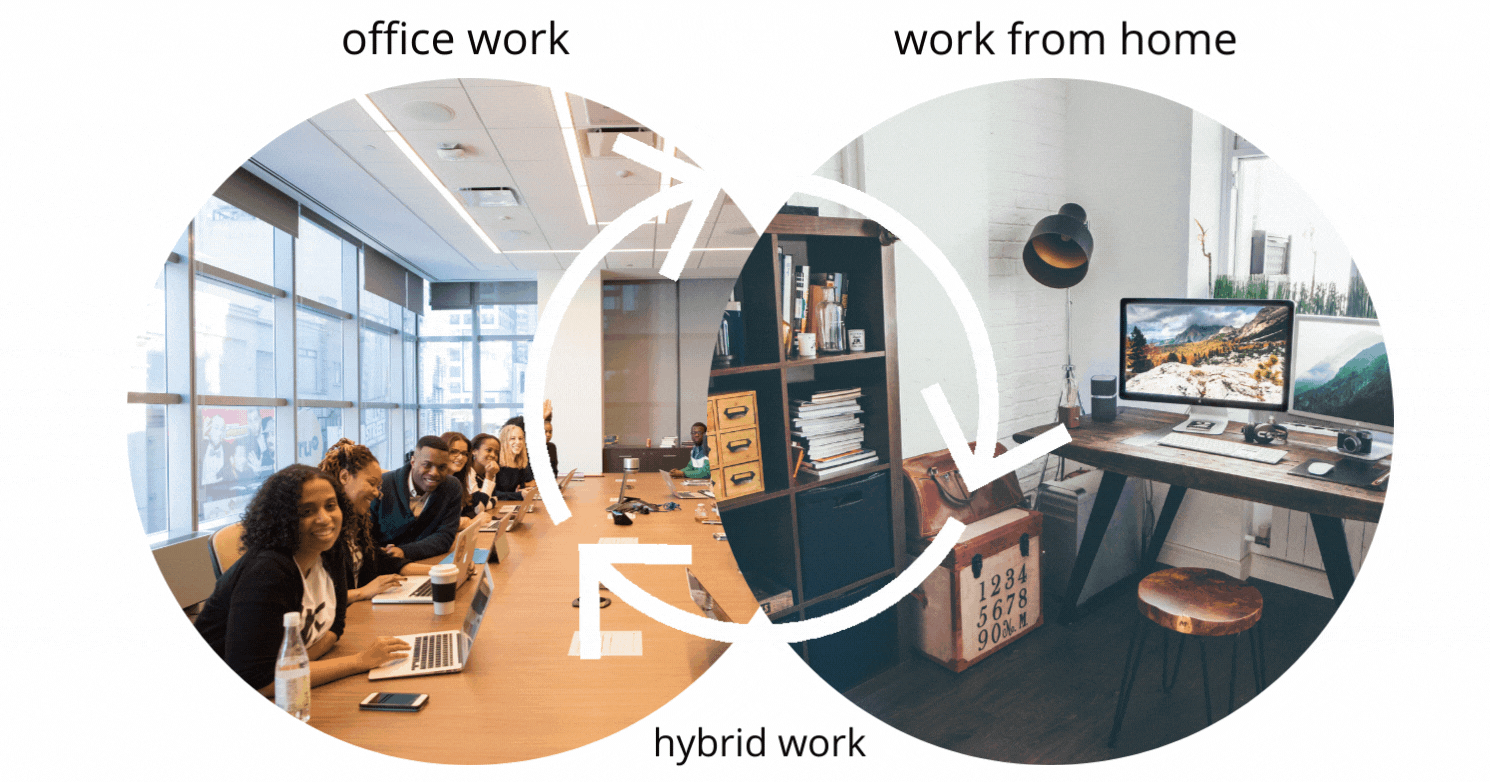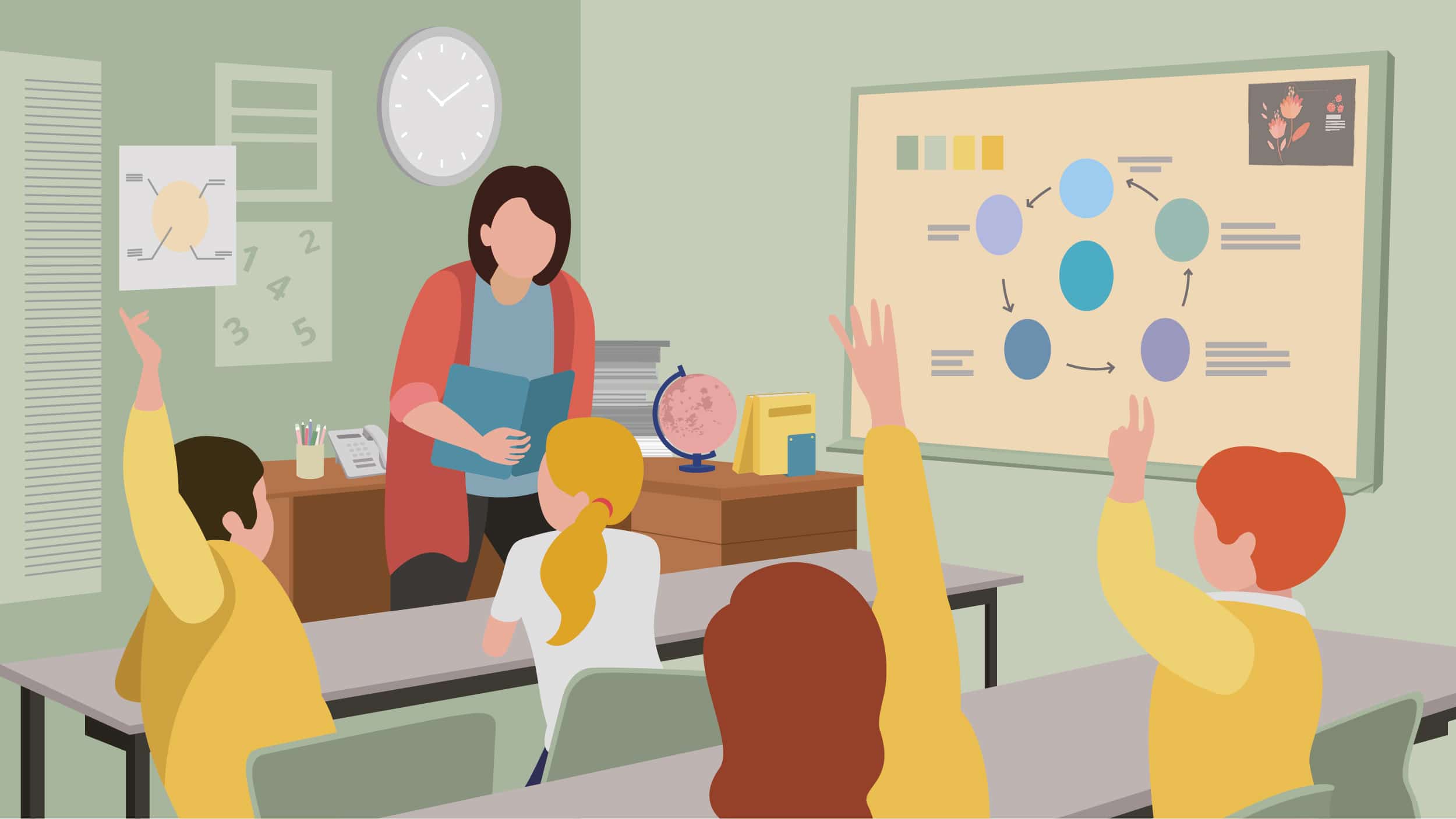Ed Tech Blog

Woodland Park, NJ – February 14, 2024 - The COVID-19 pandemic reshaped the way we work, blurring the lines between our personal and professional lives like never before. As organizations adapt to new norms, the mental health of working individuals has emerged as a critical concern. With the rise of remote work and hybrid work models, maintaining well-being in the workplace has become a difficult issue to tackle for many.

The Impact of Working from Home
Working from home has been a double-edged sword for many people. On one hand, the flexibility and autonomy it offers can enhance work-life balance and productivity. On the other hand, the lack of separation between work and home life can lead to burnout and isolation.
The absence of physical interaction with colleagues and the loss of a structured routine have contributed to feelings of loneliness and disconnection for some. Moreover, the constant presence of digital devices and the blurring of work hours can increase stress and anxiety, making it challenging for individuals to switch off and unwind.

Hybrid Work and Finding Balance
As organizations transition to hybrid work models, new challenges and opportunities arise. Hybrid work promises the best of both worlds, combining the flexibility of remote work with the benefits of face-to-face interaction and collaboration in the office.
However, navigating hybrid work arrangements requires careful planning and adaptation. Employees may find themselves grappling with conflicting expectations, trying to balance their time between home and office, and managing the logistical challenges of commuting and scheduling.

Addressing Mental Health Concerns
In the face of these challenges, it is crucial for employers to prioritize mental health support and foster a culture of well-being in the workplace. This entails providing resources and tools for employees to manage stress, setting clear boundaries around work hours and communication, and encouraging...
Read more: Navigating Mental Health in the New Normal: A Look at Working from Home and Hybrid Work

Introduction
The growth of digital technology has fueled massive opportunities in the education sector, especially with the use of interactive online tools for learning and teaching.
You can agree that it’s easier to remember the things you have watched better than the things you have read. Visuals will always win. Learning is much better when you combine information from multiple platforms incorporating print with digital resources.
The covid-19 pandemic reiterated the need for online learning and the need to have tools that contribute positively to the learning environment.
One such tool is Edpuzzle, an online video software that allows for an interactive learning environment in classrooms. Teachers can use Edpuzzle to create videos and upload them or use the discover feature to search from the vast content on the platform or from other online sources including YouTube videos and TED talks, relevant to their lessons.
Using Edpuzzle in the classroom
With the understanding that video in general is a powerful tool for teaching and disseminating information, here is how you can use Edpuzzle in the classroom to reap the maximum benefits from incorporating video into learning. Younger students like in elementary school who tend to have short attention spans could...

Introduction
Does the idea of a well-organized pantry just excite you when you know you can locate your favorite cookies without any hustle? Well, this post is not about cookies. But it’s about finding something when you need it without wasting time.
In this digital era, it is so frustrating having to sort through piles of unstructured data to look for something. Imagine what it is like for teachers and students who have to deal with mounts of class notes, meeting agendas, assignments, and other administrative documents.
There are many apps out there that promise to help you sort out and organize your data, but have you met Evernote? This is an amazing app designed for note-taking, organizing task lists, and archiving among other many uses.
Let’s see just how powerful this award-winning app is by looking at the different ways teachers and students can use Evernote in the classroom.
Why do teachers and students need Evernote in the classroom?
Being in the teaching profession comes with a load of documentation. Teachers have to deal with class notes for different classes, department meeting notes, assignments, continuous assessments tests, exams, and schemes of work.
Being a student on the other hand...
Read more: Six Ingenious Ways Teachers and Students can use Evernote in the Classroom

Understanding how seating arrangements affect student learning has the potential to be highly beneficial to classroom teachers. Of the many aspects of the physical environment discussed here, classroom seating arrangement is the simplest to understand, the most within a teacher’s control, and one of the most effective behavior interventions; furthermore, it rarely conflicts with any of the other aspects (Bicard et al., 2012; Wannarka & Ruhl, 2008). (An example of conflict between aspects would be adding carpeting to assist with acoustics, thus causing lower air quality because of increased dust particles).
The available research on types of seating arrangements explains that row seating is ideal for individual work, keeping all students (including students with track records of poor behavior) on task (Fernandes, 2009; Wannarka & Ruhl, 2008; Betoret & Argia, 2004; Budge, 2000; Edwards, 2000). Student-centered group arrangements on the other hand (e.g., 4 desks together, circles) are the preferred seating arrangement (Fernandes, 2009; Sztejnberg & Finch, 2006) in groups that are smaller and/or have a history of being highly on task and capable of handling advanced group work. importance

Conclusions
The aspects of the physical environment and their effects on learning have now been clearly identified and associated...
Read more: Impacts of the Physical Environment on Classroom Learning - Part 4

The height of a classroom’s ceiling can have an effect on both noise and lighting in the classroom. Earthman (2004) explains that higher ceilings can lessen the quality of both classroom lighting and acoustics. Research on the effects of ceiling height on classroom acoustics would be beneficial to school building designers. These designers would no doubt be able to take information regarding ceiling height into account when ensuring rooms have proper acoustics. They might also be able to provide suggestions to districts whose older school buildings have higher ceiling, and who require recommendations on how to improve acoustics despite that.
The display of student works both in the classroom and in common areas of the school has been shown to bring about a positive effect on learning. In a study by Killeen et al. (2003) it is explained that students whose work was displayed in the classroom following the completion of that work showed a revitalized sense of invested interest in the learning process of their classroom. According to Killeen the educational pride students took in contributing to the overall class led to increasingly motivated students. Maxwell’s (2000) study found that schools that displayed student artwork in common areas such...
Read more: Impacts of the Physical Environment on Classroom Learning - Part 3

Tanner (2008) explains that exposure to natural sunlight is required to ensure that a student’s basic physiological needs are being met, which allows effective learning to take place. Although it may not commonly be realized, the need for natural sunlight is second only to the need for food and water (Tanner, 2008). Evidence of the benefits of providing for this need in an educational setting can be identified in a 1999 study that compared classrooms that were exposed to appropriate levels of sunlight to classrooms in which sunlight was lacking. Classrooms whose access to windows was limited, and in turn lacked sunlight, were stunted in their progress on both reading and math (by 26% and 20% respectively) (Heschong Mahone Group, 1999). Edwards and Torcellini’s 2002 comprehensive literature review relayed similar findings and Burke & Burke-Samide’s (2004) research does so as well. Research conducted in 1992 succeeded in dispelling the idea that plentiful window access in a classroom will distract students from activities outside. The study revealed that of all the distractions from learning, views from windows are typically the least drastic (Kuller & Lindsten, 1992). In addition to providing specific guidelines for optimal sunlight access via classroom windows, Tanner’s research...
Read more: Impacts of the Physical Environment on Classroom Learning - Part 2
